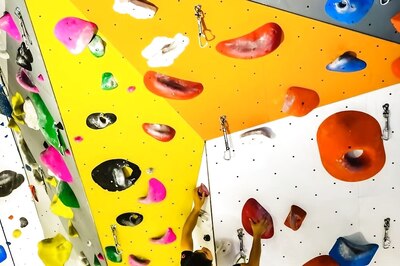
views
New Delhi: The Aligarh Muslim University, as it celebrates the bicentenary of its founder Sir Syed Ahmed Khan this week, will toast the rich cultural exchanges with the founding fathers of the Banaras Hindu University (BHU) during the formative years of the two institutions.
In 1912 for instance, one of the founders of BHU, Raja of Darbhanga Rameshwar Singh, in a speech at Aligarh, hailed “with joy the establishment of a Mohammadan University”.
Singh was the president of the Society for Hindu University which was later re-christened BHU by a central act in 1916.
Four years later, the Mohammadan Anglo-Oriental College (MAO) founded in 1875 by Khan was recognized as a central university by the British government.
“I am delighted to find that same feelings are in your mind as regards the sister institution in Benaras,” Singh is reported to have said in his address.
These exchanges were documented in ‘The Lectures and Speeches at Mohammadan Anglo-Oriental College’ by Abul Abbas, who was the secretary to the AMU vice-chancellor in 1920.
“I am delighted to find that same feelings are in your mind as regards the sister institution in Benaras. Let us therefore place our trust and work in cooperation on parallel lines for the cause that is dear to us,” Singh said in his Aligarh speech, recalling how some of Sir Syed’s Hindu friends generously donated money for the establishment of MAO.
His speech is still relevant today, with the controversies dogging the university. Singh said, “We are sometimes told that denominational universities will tend to divide Hindus and Muslims and embitter their relations. I am convinced that this will not be the case.”
“We are both actuated by the same motives, service to god, loyalty to our sovereign, and furtherance of the cause of education, and the material, industrial, commercial, intellectual advancement of our country in which we are united by so many communities and where we have lived for centuries together,” he added.
He also stressed on the commonality of this dream in his speech as an important part of “promoting toleration and goodwill among ourselves and to remove any points of difference which may unhappily arise in the future to interfere with the common object that we have in view.”
Another interesting exchange between the two institutions has been narrated by Rahat Abrar, director Urdu Academy in his book 'Sir Sayyid Ahmad Khan Aur Bhartiya Navjagran'.
It is about Sir Syed’s visit to Banaras College in July 1876 where the Islamic reformist became very good friends with Raja of Banaras, Shambhu Narayan.
“Shambhu Narayan read out the address for him and towards the end made an announcement of giving Sir Syed scholarship to at least one student of Banaras College. When foundation stone was being laid for MAO, Raja Shambhu Narayan was present on the occasion.” wrote Abrar.
The next year, Raja of Banaras visited Aligarh and was present in a meeting of Madarsatul Uloom held at Khan’s kothi to welcome the Viceroy Lord Lytton to Aligarh.
Narayan later donated money to MAO in the memory of his father Raja Dev Narayan Singh. A plaque in bearing the donor’s name has survived a hundred years of tumultuous history of the university.
“Shambhu Narayan was also the head of United Patriotic Association that was established by Sir Syed and donated Rs 60 for it,” says Abrar.
BHU founder Pandit Madan Mohan Malviya once visited AMU with the university hockey team for an inter-university sports event. A match was played between the two team at Naqvi Park in Aligarh.
“Madan Mohan Malviya was dressed in white and he was wearing shoes that were not made of leather as he didn’t like them. Huge crowd turned up to watch the friendly hockey match between the two teams,” writes Prof. Rashid Ahmed Siddiqui, former chairman of the Urdu department, in his book on the AMU history.
Sir Syed Ahmed bi-centenary celebrations will formally start with commemorative address by former President Pranab Mukherjee at a function in AMU campus Tuesday morning.




















Comments
0 comment